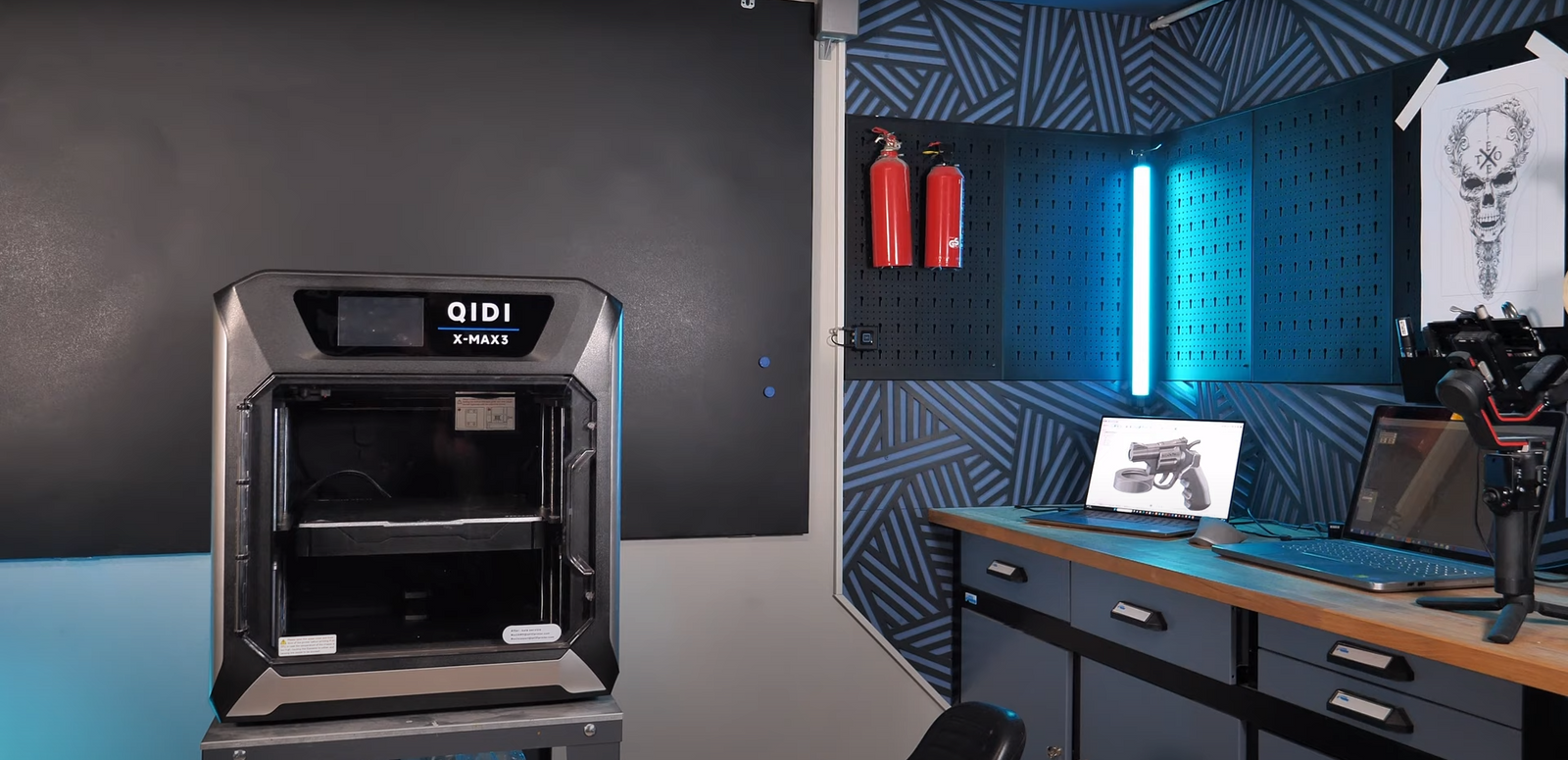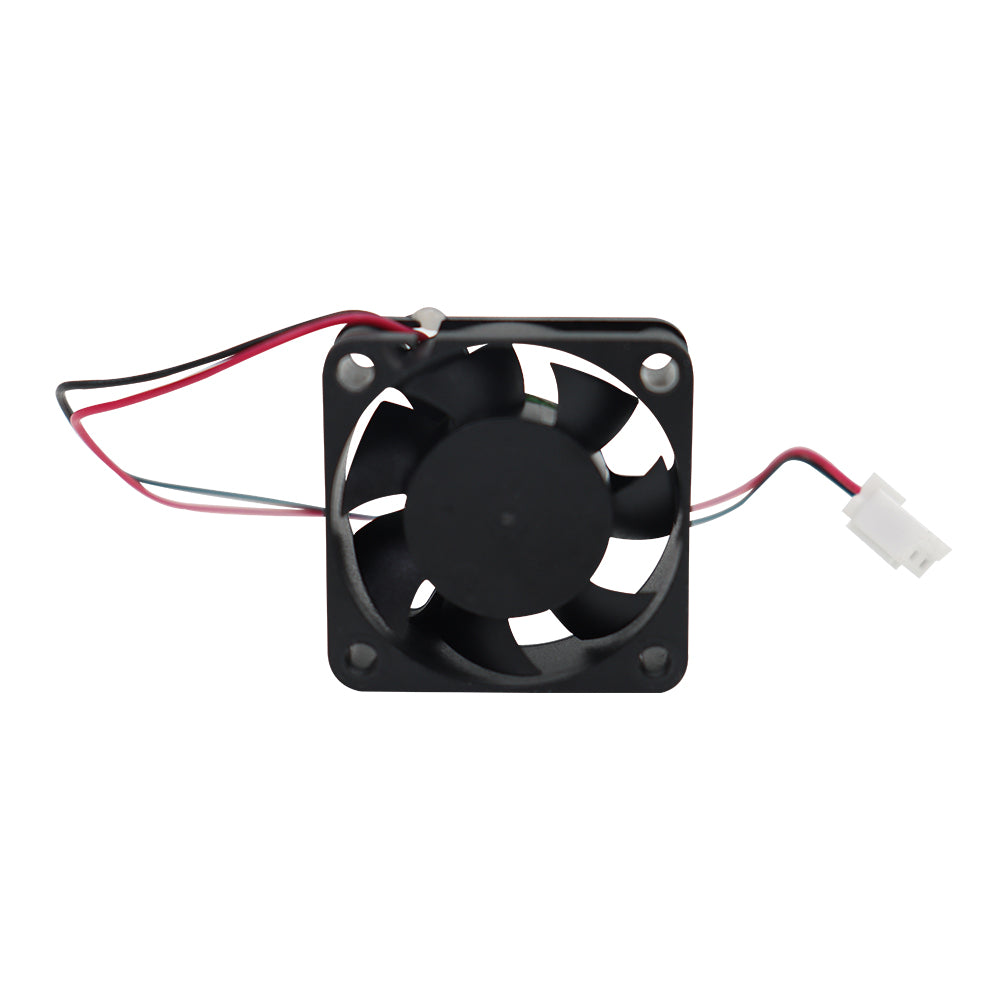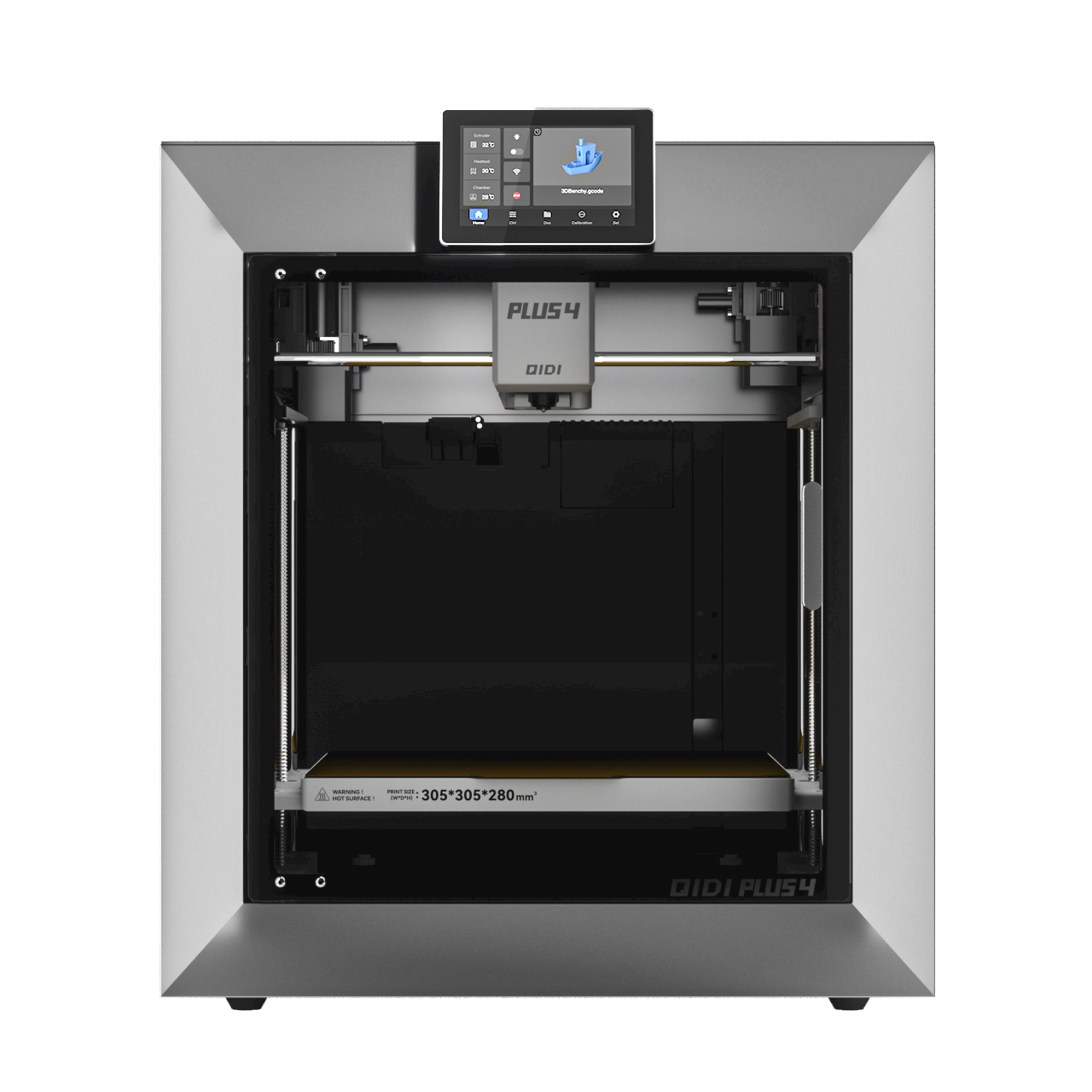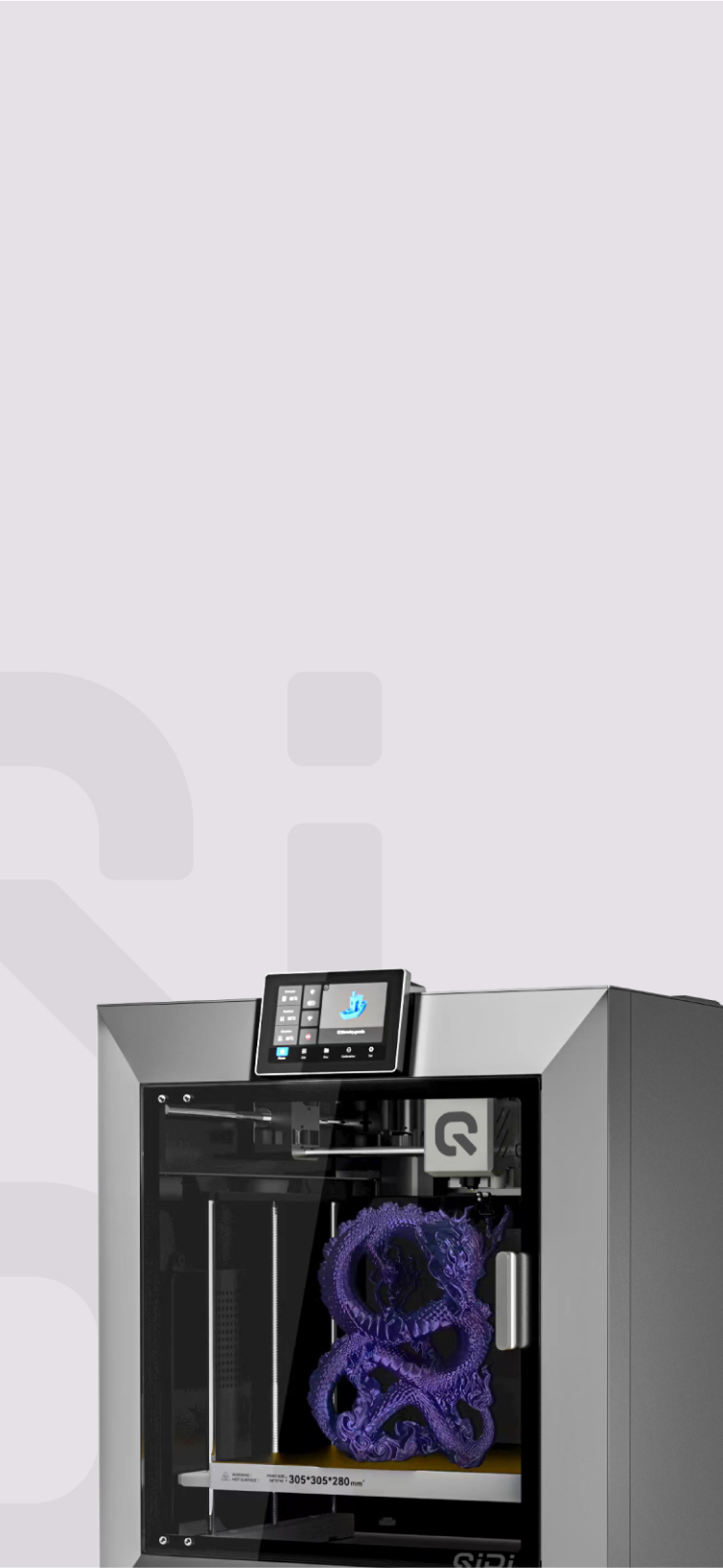Ist Ihr 3D -Drucker laut? Finden Sie heraus, warum und wie man es behebt


Der 3D-Druck hat die Art und Weise verändert, wie wir Objekte erstellen, und ermöglicht die schnelle Herstellung komplexer Designs und kundenspezifischer Teile. Ein häufiges Problem vieler 3D-Druckerbesitzer ist jedoch Lärm. Vom Surren der Schrittmotoren über das Summen der Lüfter bis hin zu den Vibrationen des Druckers selbst kann Lärm eine große Ablenkung und sogar Frustration verursachen. Dieser Blogbeitrag stellt die Hauptursachen für Lärm in 3D-Druckern vor und zeigt praktische Lösungen zur Lärmreduzierung. Mit diesen Tipps können Sie ein angenehmeres und produktiveres 3D-Druckerlebnis mit weniger Lärm genießen.
Wie 3D-Drucker Lärm erzeugen
Um Lärmprobleme bei 3D-Druckern wirksam zu bekämpfen, ist es wichtig zu verstehen, wie diese Maschinen funktionieren und welche Teile zur Lärmentwicklung beitragen. 3D-Drucker Erstellen Sie Objekte, indem Sie den Druckkopf bewegen und in einer Reihe präziser, komplexer Bewegungen eine Plattform bauen. Diese Bewegungen werden von Schrittmotoren angetrieben, die eine erhebliche Lärmquelle darstellen können. Zusätzlich werden Kühllüfter zur Temperaturregelung des Druckkopfs und anderer Komponenten eingesetzt, was den Gesamtgeräuschpegel ebenfalls erhöhen kann. Mechanische Bewegungen, wie die Bewegung des Druckkopfs über die Bauplatte oder die Auf- und Abbewegung der Bauplattform, können noch mehr Lärm erzeugen, insbesondere wenn lose oder abgenutzte Teile vorhanden sind.

Hauptgeräuschquellen bei 3D-Druckern und wie man sie behebt
Sehen wir uns die häufigsten Geräuschquellen bei 3D-Druckern an und wie man sie jeweils beheben kann.
Schrittmotoren
Schrittmotoren bewegen den Druckkopf und bauen die Plattform präzise auf. Sie funktionieren durch schnelles Ein- und Ausschalten elektromagnetischer Spulen, was ein deutliches Jammern oder Brummen verursachen kann. Der Geräuschpegel hängt von der Qualität und Konstruktion der Motoren sowie den aktuellen Einstellungen ab.
Um das Geräusch des Schrittmotors zu reduzieren, können Sie die aktuellen Einstellungen anpassen. Durch Senken des Stroms lässt sich das Rauschen reduzieren. Achten Sie jedoch darauf, ihn nicht zu niedrig einzustellen, da dies die Druckqualität beeinträchtigen kann. Eine weitere Lösung sind Schrittmotordämpfer. Dabei handelt es sich um kleine Gummi- oder Silikonteile, die zwischen Motor und Druckerrahmen eingesetzt werden, um Vibrationen zu absorbieren und den Lärm zu reduzieren. Einige neuere Drucker sind auch mit geräuscharmen Schrittmotortreibern ausgestattet, die mithilfe fortschrittlicher Technologie den Lärm minimieren.
Lüfter
Kühllüfter halten den Druckkopf und andere Teile auf der richtigen Temperatur, können aber auch zur Gesamtgeräuschentwicklung beitragen. Um die Lüftergeräusche zu reduzieren, können Sie die Standardlüfter durch leisere Aftermarket-Lüfter ersetzen, die leise arbeiten und dennoch effektiv kühlen. Bei einigen Druckern lässt sich die Lüftergeschwindigkeit auch über die Firmware oder Slicer-Software anpassen. Eine geringere Geschwindigkeit kann zwar die Geräuschentwicklung reduzieren, aber die Kühlleistung beeinträchtigen. Eine weitere Möglichkeit ist die Verwendung gut konstruierter Lüfterhauben oder -kanäle, die den Luftstrom effizienter lenken und so Turbulenzen und Lärm reduzieren.

Vibrationen
Vibrationen durch die Bewegungen des Druckers können das Geräusch verstärken, insbesondere wenn der Drucker nicht stabil steht. Um Vibrationsgeräusche zu minimieren, stellen Sie Ihren Drucker auf eine stabile, ebene Fläche. Sie können auch Antivibrationspads oder einen speziellen Druckersockel verwenden, um Vibrationen weiter zu reduzieren. Überprüfen Sie regelmäßig, ob lose Schrauben, Bolzen oder andere Teile vorhanden sind, die Klapper- oder Vibrationsgeräusche verursachen können, und ziehen Sie diese bei Bedarf fest. Das Anbringen von vibrationsdämpfenden Materialien wie Schaumstoff oder Gummiplatten am Rahmen oder Gehäuse des Druckers kann ebenfalls dazu beitragen, Vibrationen zu absorbieren und Geräusche zu reduzieren.
Mechanische Probleme, die Ihren 3D-Drucker laut machen können
Zusätzlich zu den bereits besprochenen allgemeinen Geräuschquellen können auch mechanische Probleme dazu führen, dass Ihr 3D-Drucker lauter wird.Zwei Hauptprobleme sind lose Teile und abgenutzte Komponenten.
Lose Teile
Im Laufe der Zeit, Die verschiedenen Teile Ihres 3D-Druckers können sich durch Vibrationen und regelmäßige Nutzung lösen. Lose Teile können Klappern, Klicken oder andere unerwünschte Geräusche verursachen. Um dieses Problem zu beheben, überprüfen Sie Ihren Drucker regelmäßig auf lose Schrauben, Bolzen oder andere Befestigungselemente und ziehen Sie diese bei Bedarf fest, um einen sicheren Halt zu gewährleisten. Achten Sie auch auf lose Riemen oder Riemenscheiben, da diese ebenfalls Geräusche verursachen können. Passen Sie die Riemenspannung bei Bedarf an und stellen Sie sicher, dass die Riemenscheiben fest angezogen sind.
Abgenutzte Komponenten
Mit zunehmendem Alter Ihres 3D-Druckers können sich einige Teile abnutzen, was zu mehr Lärm führt und möglicherweise die Druckqualität beeinträchtigt. Zu den häufigsten Verschleißteilen gehören:
Linearlager: Diese Lager ermöglichen die reibungslose Bewegung des Druckkopfs und der Bauplattform. Bei Verschleiß können sie Schleif- oder Klappergeräusche verursachen. Überprüfen Sie Ihre Linearlager regelmäßig und ersetzen Sie sie bei Bedarf.
Gürtel: Mit der Zeit können sich Riemen dehnen, ausfransen oder abgenutzte Zähne entwickeln, was zu Geräuschen führt und die Druckqualität beeinträchtigt. Achten Sie auf Verschleißerscheinungen an Ihren Riemen und ersetzen Sie sie bei Bedarf.
Ventilatoren: Kühllüfter können staubig und schmutzig werden, wodurch sie laut werden oder sogar ihren Betrieb einstellen können. Reinigen Sie Ihre Lüfter regelmäßig und ersetzen Sie sie, wenn sie zu laut werden oder ganz ausfallen.
Tipps zur Kalibrierung und Wartung zur Reduzierung des 3D-Druckergeräuschs
Regelmäßiges Kalibrieren und Warten Ihres 3D-Druckers kann dazu beitragen, Lärmprobleme zu vermeiden und zu reduzieren. Hier sind einige wichtige Tipps:
Bewegliche Teile schmieren: Durch die richtige Schmierung von Linearstangen, Leitspindeln und anderen beweglichen Teilen können Reibung und Lärm reduziert werden. Verwenden Sie ein hochwertiges, leichtes Schmiermittel speziell für 3D-Drucker und tragen Sie es sparsam auf, um Staub und Schmutz zu vermeiden.
Führen Sie routinemäßige Wartungsarbeiten durch: Erstellen Sie einen regelmäßigen Wartungsplan, um Ihren Drucker in einem guten Zustand zu halten. Dieser sollte Aufgaben wie Reinigung des Druckbetts, Düsen- und Extruderzahnräder sowie Überprüfung auf lose oder abgenutzte Teile.
Kalibrieren Sie Ihren Drucker regelmäßig: Eine ordnungsgemäße Kalibrierung gewährleistet die optimale Leistung Ihres Druckers und reduziert das Risiko von Störungen. Überprüfen und justieren Sie regelmäßig die Riemenspannung, die Druckbettnivellierung und andere Kalibrierungseinstellungen Ihres Druckers, wie im Handbuch Ihres Druckers beschrieben.
Indem Sie diese einfachen Tipps befolgen, können Sie helfen Halten Sie Ihren 3D-Drucker am Laufen reibungslos und leise. Wenn Sie sich die Zeit nehmen, bewegliche Teile zu schmieren, Routinewartungen durchzuführen und Ihren Drucker regelmäßig zu kalibrieren, können Sie Lärmprobleme erheblich vermeiden und reduzieren.
Upgrades und Änderungen, um Ihren 3D-Drucker leiser zu machen
Wenn Sie versucht haben, die üblichen Geräuschquellen zu beheben und Ihren Drucker zu warten, er aber immer noch zu laut ist, sollten Sie die folgenden Upgrades in Betracht ziehen, um ihn leiser zu machen:
- Silent Stepper-Treiber: Durch die Umrüstung auf leise Schrittmotoren können Sie die Geräuschentwicklung Ihrer Druckermotoren deutlich reduzieren. Wenn Ihr Drucker kompatibel ist, kann dies eine gute Investition für ein leiseres Erlebnis sein.
- Anlagen: Durch die Unterbringung Ihres Druckers in einem speziellen Gehäuse können Sie die Temperatur regulieren und den Lärm deutlich reduzieren. Sie können ein Gehäuse kaufen oder selbst eines aus Materialien wie Acryl oder einem alten Schrank bauen.
- Antivibrationspads und Dämpfer: Das Anbringen von Antivibrationspads unter den Druckerfüßen und der Einbau von Schrittmotordämpfern zwischen Motoren und Rahmen können Vibrationen absorbieren und den Lärm minimieren. Diese einfachen und kostengünstigen Änderungen können den Gesamtgeräuschpegel deutlich senken.

Wann Sie professionelle Hilfe suchen sollten
Obwohl sich viele Lärmprobleme mit den beschriebenen Lösungen beheben lassen, benötigen Sie manchmal professionelle Hilfe. Wenn Sie eines der folgenden Probleme feststellen, wenden Sie sich möglicherweise an einen qualifizierten Techniker oder den Support des Herstellers:
- Anhaltende Lärmprobleme, die Sie nicht lösen können mit Standardmäßige Fehlerbehebung und Wartungsverfahren.
- Seltsame Geräusche, die mit einer Verschlechterung der Druckqualität oder der Druckerleistung einhergehen.
- Schäden an Druckerteilen, die eine Reparatur oder einen Austausch erfordern und über das hinausgehen, was Sie selbst tun können.
Wenn Sie professionelle Hilfe suchen, achten Sie darauf, einen seriösen Dienstleister zu wählen oder wenden Sie sich direkt an den Hersteller, um Rat zu erhalten. Sie können Ihnen dabei helfen, die Ursache des Problems herauszufinden und spezifische Lösungen anbieten, damit Ihr 3D-Drucker wieder leise und effizient läuft.
Verabschieden Sie sich vom lauten 3D-Druck!
Lärm ist für viele Besitzer von 3D-Druckern ein häufiges Problem, aber Sie können ihn direkt angehen, indem Sie herausfinden, woher der Lärm kommt, und die richtigen Tricks anwenden. Es gibt viele Möglichkeiten, den Druck leiser zu gestalten, z. B. durch die Anpassung der Schrittmotoreinstellungen, den Austausch von Lüftern, eine optimale Kalibrierung und die Instandhaltung Ihres Druckers. Indem Sie diese Lärmprobleme lösen, sorgen Sie für ein angenehmeres Erlebnis für sich und alle um Sie herum und sorgen dafür, dass Ihr 3D-Drucker jahrelang einwandfrei läuft. Warum also den Lärm noch länger ertragen? Setzen Sie diese Tipps jetzt um und Sie werden im Handumdrehen 3D-Druck-Glück haben!


 Q2
Q2





